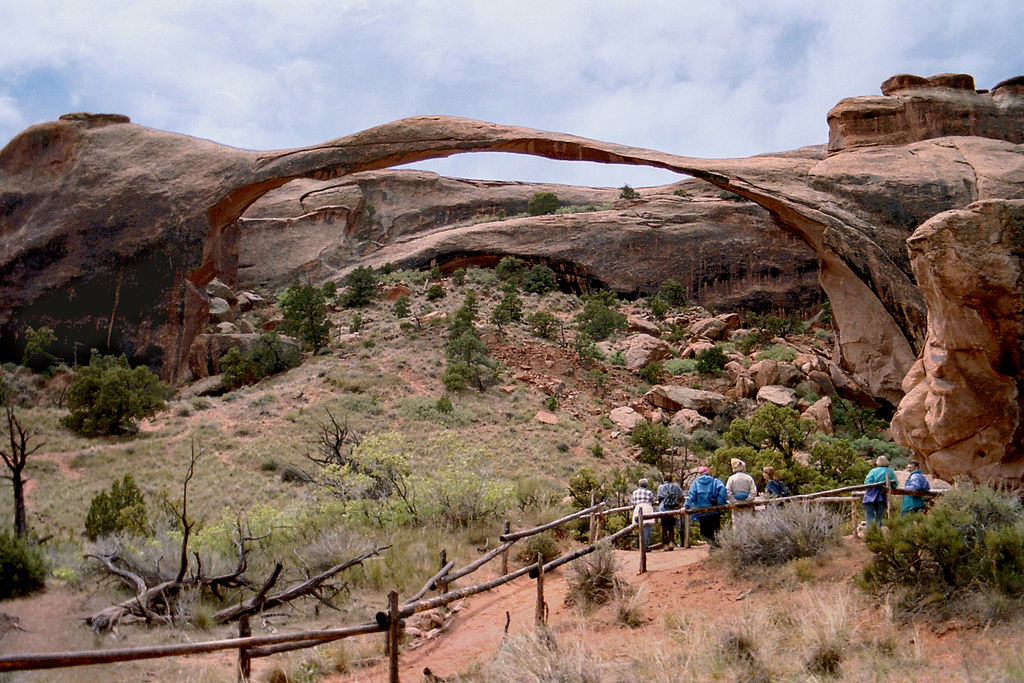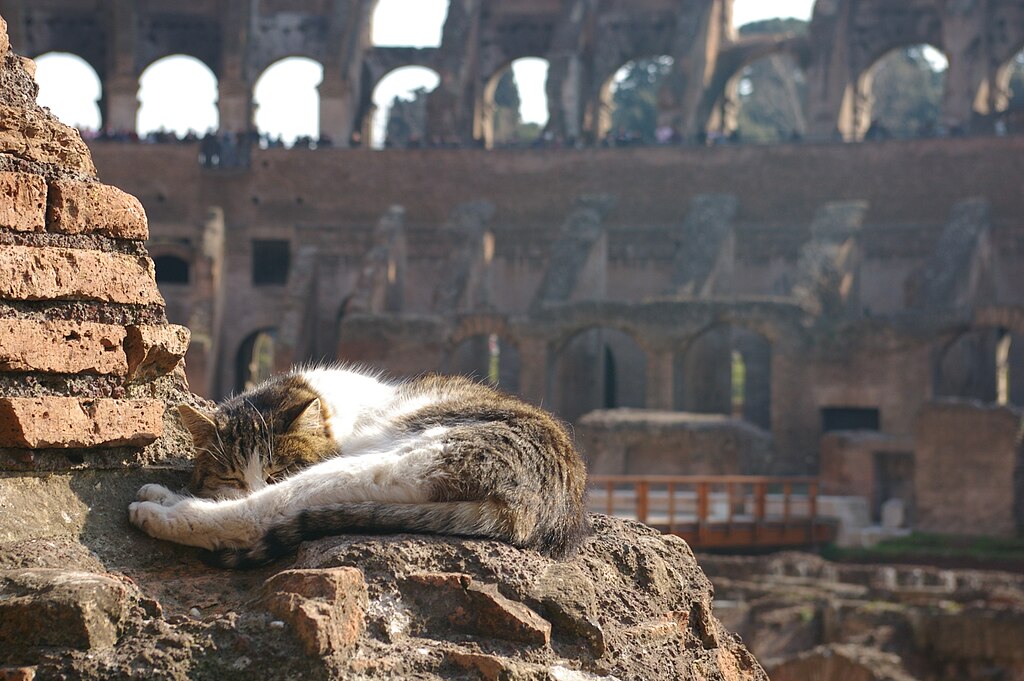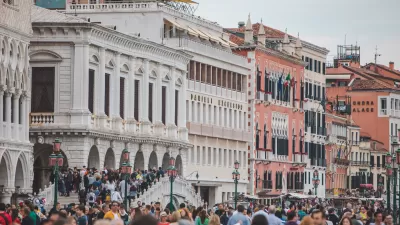What’s a popular travel destination to do? From ice cream bans to “Stay Away” marketing campaigns, cities and countries across the world are getting creative in their efforts to curb the negative impacts of mass tourism and tourists behaving badly.

This is the second installment of a two-part blog series that takes you on a tour around the world to explore what is driving mass tourism in a small number of destinations (part 1) and the policies those places have put in place to address the challenges that come with an excess of visitors (part 2).
Summer travel season is now well and truly underway, and popular destinations across the globe are feeling the heat — both figuratively and literally. As predicted earlier in the year, the travel economy is booming. An article from the Seattle Times reads, “Pretty much every barometer of travel intent is up for the summer travel season. Inflation and unemployment are low, and consumer sentiment and curiosity are high, fueling an unprecedented interest in travel during the summer of 2024.”
As discussed in Part 1 of this blog series, “Too Much of a Good Thing? 5 Flavors of Overtourism,” popular travel destinations across the world are being inundated with visitors, and it’s causing major issues for local residents, infrastructure, and ecosystems, including nuisances and unsafe conditions; stress on roads, bridges, and ports; damage to historic sites, landmarks, and the environment; stress on local housing inventory; and more.
In this blog post, I’ll cover the strategies various local, state, and even national governments around the world have taken to curb the negative impacts of overtourism in their cities and regions.
7 tactics popular destinations are using to curb overtourism
Each destination grappling with overtourism faces its own unique challenges, so it should come as no surprise that their attempts to solve the crunch also run the gamut. Based on my research, the actions taken so far fall into seven broad buckets:

1. Tourist taxes
One strategy to slow steady streams of tourists is to make it less convenient for them to visit. What better way to do that is by stretching their travel budgets? Using taxes to encourage or discourage certain behaviors is not a revolutionary idea; neither are tourism taxes, as a matter of fact. Governments have used them for decades to increase revenue and invest in infrastructure and marketing to further support their tourism economies. But more recently, some cities have turned to them as a way to stem the flood.
For example, National Geographic recently reported, “Crowded landmark sites, such as Las Ramblas in Barcelona, Dam Square in Amsterdam, and St. Mark's Square in Venice, have forced all three cities to impose or increase existing tourist taxes to curb overcrowding and placate frustrated locals.” Likewise, in Portugal, Lisbon is planning to double its tourist tax from $2.15 to $4.30 on September 1, and Paris’s tourist tax, which levies an extra charge on accommodations, has more than tripled in recent years. These taxes are usually per-night fees tacked onto overnight accommodation charges.
However, there is some question as to whether tourist taxes actually work to deter travelers. Many destinations are finding that visitors are still coming, but Núria Guitart-Casalderrey, tourism professor at the University of Barcelona, told National Geographic, “These charges haven’t deterred tourists from visiting Barcelona. But they have improved the city as a destination, and enhanced quality of life for its residents.”

2. Entry fees
Unlike tourist taxes, which only affect visitors who stay overnight, some cities and destinations charge entry fees. Again, entry fees are not a novel concept. However, an increasing number of places are instituting entry fees on previously free cultural sites. For example, in January of this year, Turkey instituted a 25€ fee to foreign tourists wanting to visit Istanbul's popular sixth-century monument Hagia Sophia, which is now a mosque. And in April, Venice — possibly the poster child for overtourism — introduced a 5€ fee to day trippers to gain access to the entire city. Travelers just visiting for the day (and not subject to Venice’s existing tourist tax) literally have to buy tickets to gain entry, which has the added benefit of allowing the city control the number of people they allow into the city each day.
But entry fees to long-time free cultural sites are not always welcomed by locals. Officials in Seville, Spain, stirred up controversy earlier this year when they proposed a 5€ entry fee to its famous Plaza de España, a UNESCO World Heritage Site “to manage the growing influx of visitors and preserve the historical integrity of the iconic plaza,” reports Mighty Travels Premium. The plaza is currently undergoing a major renovation to increase accessibility and improve visitor experience. But the entry fee proposal has received pushback from local businesses, tourism advocates, as well as residents, who fear economic repercussions and concerns that a fee would price out local residents and limit the plaza’s use as a public space.

3. Time slots
Some destinations are instituting time limits or time slots, similar to theme parks that allow visitors to book time slots to ride popular rides and avoid waiting in long lines. This year, timed-entry reservations were required in 10 U.S. National Parks with the aim of controlling overcrowding. The popularity of national parks have risen significantly since 2014. Visitor numbers hit an all-time record of 327.5 million in 2019, and after falling during the pandemic, were back up to 325.5 million visits in 2023 and are on track to set a new record in 2024. Despite this increased popularity, national parks remain understaffed and underfunded, with a maintenance backlog of $22 billion. Ticketed time entry not only allows for an improved visitor experience but can help parks better document visitor numbers and keep on top of daily tasks like trash and restroom maintenance.
Timed-entry isn’t just for parks. Since 2019, the Almalfi coast has used an “alternating license plate” system to manage the flow of tourists on its busy coastal road, which an article in the Guardian says is described as “a nightmare” by locals. To avoid a “perpetual jam,” cars with license plates ending in an odd number are allowed to use the road one day, and those ending in an even number can use it the next. The system goes into effect on weekends from 10 a.m. to 6:00 p.m. in June, July, and October, and every day in August and September from 10:00 a.m. to 6:00 p.m.

4. Short-term accommodation regulations
Another way cities across the world are combating overtourism and its ill effects is through regulation of short-term rentals. Limiting the number and types of overnight accommodations available to visitors not only serves the purpose of quelling the supply and demand aspect of overtourism, but it also pushes back against the conversion of large swaths of residential housing units into short-term rentals, which can lead to a housing crunch for locals. These regulations take a variety of forms, including principal residence requirements, maximum number of listings, nights-per-year maximums, consecutive-night minimums, and “whitelist” neighborhoods, according to Bloomberg’s CityLab.
Here’s a handful of notable regulations recently implemented in cities worldwide:
- In June, Barcelona mayor Jaume Collboni pledged to ban short-term apartment rentals in the city by the end of 2029, a move that is expected to strip more than 10,000 apartments of their short-term rental licenses.
- In May, Hawaii passed a law allowing counties to limit the number of short-term rentals as well as convert existing short-term rental units back into long-term residential housing. Shortly after, Maui announced plans to eliminate more than half of the island’s short-term rentals.
- Last fall New York launched a strict registration process to verify compliance with the city’s longstanding — but poorly enforced short-term rental rules, which resulted in a significant percent reduction of the short-term rentals catalog within two months (in conjunction with Airbnb agreeing to block invalid listings).
- This year, Amsterdam reduced the number of licensed B&B premises by 30 percent; this comes after the city banned Airbnb and similar platforms in three city districts in 2020, as well as mandated permits limiting rentals to a maximum of 30 nights annually elsewhere. The city has said no new hotels; according to The New York Times, Amsterdam will only allow a new hotel to be built if another is torn down.
- Last year, Florence banned new short-term rentals in the city’s historic center from Airbnb and similar platforms in an effort to combat overtourism and reverse an exodus of locals from the neighborhood. The city is also offering three years of tax breaks to landlords of existing short-term rentals if they switch to long-term leases.

5. Bans
Another form of regulation being used to combat overtourism and its impacts are outright bans. They can range from seemingly minor to more significant. For example, earlier this year Milan banned late-night food and drinks as a way to cut down on late-night drunken tourist shenanigans; the ban has since been reversed, after a backlash from local residents, for whom late-night ice cream is a traditional treat. Hawaii banned the sale of sunscreen that contains oxybenzone and octinoxate, two chemicals that can harm coral reefs. In Venice, groups larger than 25 people are banned, as is the use of loudspeakers by tour group guides on the streets.
One larger type of ban has been enacted by several cities, both in an effort to stem huge influxes of visitors and to reduce the strain on port infrastructure: cruise ships. Internationally, these floating behemoths have been banned entirely from locations like Venice, Amsterdam, Barcelona, the Norwegian fjords, Santorini, Palma de Mallorca, Dubrovnik (location of popular Game of Thrones series), and Bora Bora. U.S. cities that no longer allow cruise ships to dock include Monterey, California; Juneau, Alaska; Houston, Texas; Charleston, South Carolina; Hoboken, New Jersey; and Key West, Florida.

6. Physical barriers
Some hotspots have chosen to erect physical barriers to either eliminate the attraction or protect visitors — and residents — from themselves. The most interesting case of this is in Fujikawaguchiko, Japan, where the town erected a barrier to block a striking view of Mount Fuji from a convenience store parking lot. Time magazine reports, “As the spot surged in popularity after earning a reputation on social media for being “very Japanese,” a local official told AFP, throngs of tourists have wreaked havoc, sometimes parking their cars without permission, leaving litter behind, and even climbing onto the roof of a nearby dental clinic in hopes of a better vantage point for the perfect shot.”
Last year, residents in the town of Hallstatt in the Austrian mountains, which some say inspired Disney’s Frozen, similarly put up a fence because they were so frustrated with visitors stopping to take pictures. It’s since been removed, but according to euronews, Hallstatt’s mayor told the Austrian press that the town’s residents just want to be left alone.

7. Fines and crackdowns
Lastly, we have the time-tested method of criminalization to dissuade would-be “tourists behaving badly” from undesired behaviors or visiting altogether. European media outlet euronews has reported several cities implementing steep fines for a variety of offenses, including €500 and €3,500 fines for walking up to Sardina’s famous Spiaggia Rosa for anyone walking on it or caught stealing sand, respectively; fines of up to €36,000 for playing their music too loudly on Portugal’s beaches; €270 fine for anyone taking selfies on the quay in Portofino, Italy. Amsterdam also has fines of €100 for public drunkenness and €140 for public urination, as well as a campaign called “Stay Away” aimed at discouraging young foreigners from partying to excess.
After a sharp increase of tourists defacing public monuments and historic sites in Italy, including the Colosseum, “Italy keeps ratcheting up legal penalties for bad behaviour, including fines of up to 60,000 euros and possible jail time for defacing the country’s historic monuments, according to a Bill passed in April,” Lifestyle magazine reports.
Cautionary tale of a tourism-dependent economy
For many local, state, and national economies worldwide, tourism is a vital part of their economies. Unfortunately, there is not a cut-and-dried answer to the question of how to balance the need for the dollars tourism brings and negative outcomes associated with too many — and badly behaved — visitors. And the jury is out on whether a lot of the methods covered in this article are even effective in managing (or in some cases discouraging) tidal waves of like-minded travelers.
For local communities that are not dealing with overtourism and the consequences it brings, these popular destinations’ experiences and responses serve as a cautionary tale, particularly as the popularity of travel increases: the tipping point between “Welcome, visitors!” and “Keep out!” — particularly in this age of viral internet sensations and the advent of AI travel planning — is a hazy one.
And I’ve not even touched on the massive elephant in the room: the broader question of sustainability and the impacts of international travel on global emissions and climate change. Are the costs of air travel and cruise ship emissions worth the consequences, both for the very places and natural wonders people are traveling to see and their communities back home? But that’s a topic for another post.

Planetizen Federal Action Tracker
A weekly monitor of how Trump’s orders and actions are impacting planners and planning in America.

Map: Where Senate Republicans Want to Sell Your Public Lands
For public land advocates, the Senate Republicans’ proposal to sell millions of acres of public land in the West is “the biggest fight of their careers.”

Restaurant Patios Were a Pandemic Win — Why Were They so Hard to Keep?
Social distancing requirements and changes in travel patterns prompted cities to pilot new uses for street and sidewalk space. Then it got complicated.

Platform Pilsner: Vancouver Transit Agency Releases... a Beer?
TransLink will receive a portion of every sale of the four-pack.

Toronto Weighs Cheaper Transit, Parking Hikes for Major Events
Special event rates would take effect during large festivals, sports games and concerts to ‘discourage driving, manage congestion and free up space for transit.”

Berlin to Consider Car-Free Zone Larger Than Manhattan
The area bound by the 22-mile Ringbahn would still allow 12 uses of a private automobile per year per person, and several other exemptions.
Urban Design for Planners 1: Software Tools
This six-course series explores essential urban design concepts using open source software and equips planners with the tools they need to participate fully in the urban design process.
Planning for Universal Design
Learn the tools for implementing Universal Design in planning regulations.
Heyer Gruel & Associates PA
JM Goldson LLC
Custer County Colorado
City of Camden Redevelopment Agency
City of Astoria
Transportation Research & Education Center (TREC) at Portland State University
Camden Redevelopment Agency
City of Claremont
Municipality of Princeton (NJ)






























